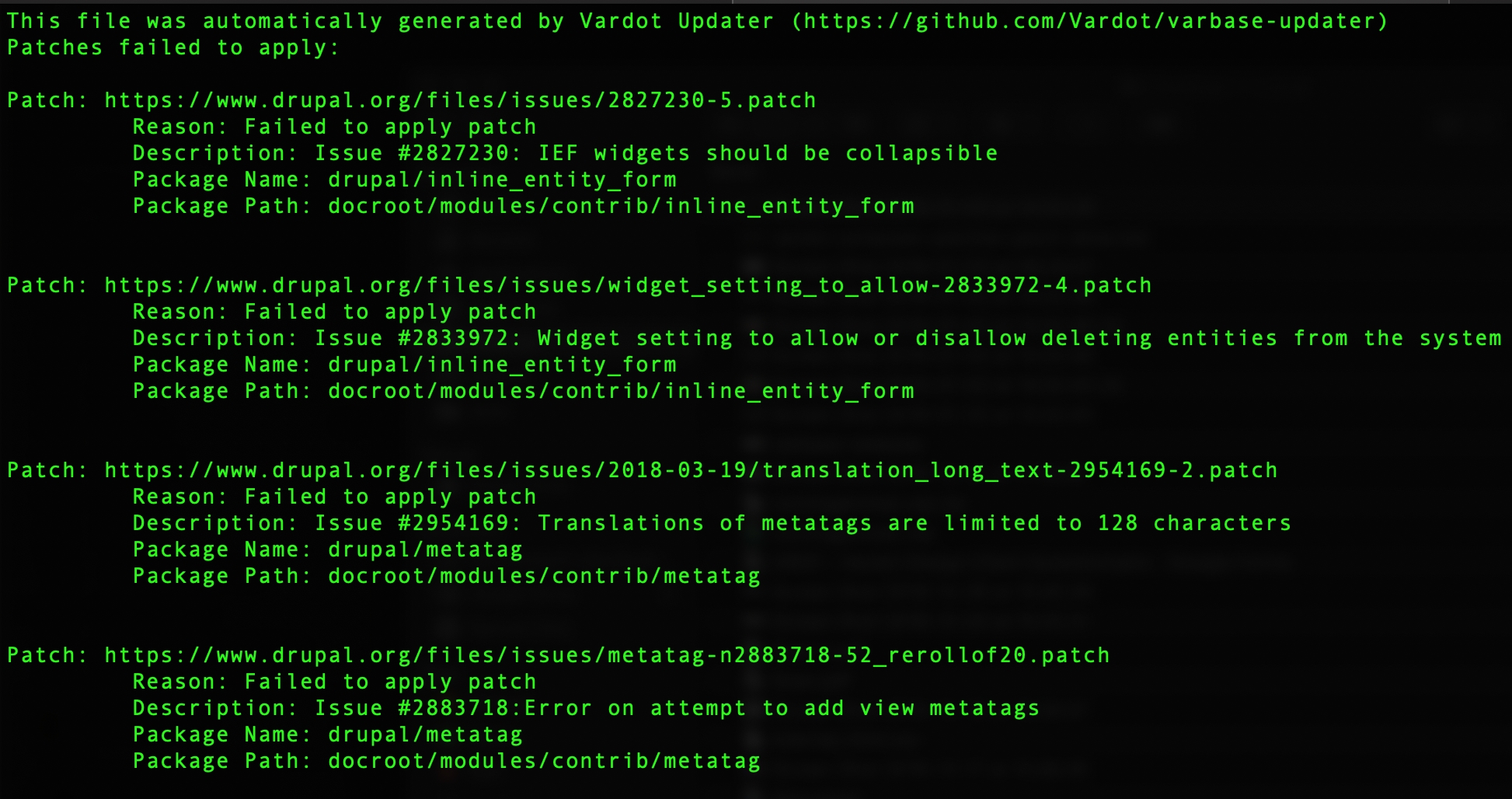Handling Patches When Updating
Background
Most Drupal distributions use a Composer patching package called "cweagans/composer-patches". This package handles the patching mechanism nicely.
However, there are a number of problems we have had while maintaining Varbase and building sites on Varbase. Those problems are:
There's no logging mechanism for failed patches
Patches most of the times get included in new releases, there's no way this package can detect if the patch is already included in the new release
These issues become quite irritating and when maintaining a Drupal site, as Varbase and other Drupal distros rely on patches to work well.
Therefore, we have thought of a better way to handle patching (it's now implemented in Varbase 8.6.3 and above). You'll need to update your Varbase version to make use of this patching mechanism.
Now Varbase offers a forked and upgraded version of composer-patches package.
composer-patches package.If you have updated to Varbase 8.6.3 or newer it will be automatically included.
Or see installing Vardot's version of composer-patches to add it manually.
You can find it on https://github.com/Vardot/composer-patches
Patching Scenarios
When you execute composer update or composer require vendor/xyz command, newer versions of modules or core are downloaded. If patches for those modules are included, there are 3 possible scenarios:
Patch Applying Scenario
Patch is Still Needed?
Patch Will Apply?
Manual Action Needed?
1. Best Case: Patch has not been included, and new version did not break the patch.
Yes
Yes
✅ Nothing needed
2. Average Case: Patch has been included in the new version.
No
No
❌ You have to remove the patch from composer.jsonor add the patch to patches-ignore list incomposer.json
3. Worst Case: Patch has not been included, and new version did break the patch.
Yes
No
❌ You have to manually re-roll the patch, handle conflict, and fix it yourself
How Vardot Will Handle Those Cases
Based on the scenarios mentioned above, we have forked the "cweagans/composer-patches" package, and added an Event Dispatcher on patch failure. The Event Dispatcher will dispatch an Event that will prompt you to perform an action depending on the scenarios above. Thus:
Best Case: Patch has not been included, and new version did not break the patch.
Nothing will happen.
Average Case: Patch has been included in the new version.
The Varbase Updater will detect that the patch has been applied and ask you if you want to remove it from your composer.json file.
If the patch is not in the root composer.json file, then Varbase Updater will ask to add it to the patches-ignore list instead.
Example screenshot below:

Worst Case: Patch has not been included, and new version did break the patch.
The Varbase Updater will log failed patches to a file named varbase_failed_patches.log
You can review it and try to handle those patches yourself.
Example screenshot of varbase_failed_patches.log below:

Installing Vardot's composer-patches Package
Varbase 8.6.3 or greater
If you're using Varbase 8.6.3 or greater, just run composer update and it will work.
Varbase 8.6.2 or older
If you're using Varbase 8.6.2 or older, you can update to the most recent version of Varbase 8.6.x and make use of this functionality, or by running the following commands:
From a command prompt window, navigate to your project:
cd /path/to/YOUR_PROJECTAdd Vardot's composer-patches repository to use our forked package instead of the cweagans's.
composer config repositories.composer-patches vcs https://github.com/vardot/composer-patchesRequire the Varbase Updater package. (Requiring the package only without running the update command will add the Composer plugins for patching but won't update Varbase. To update, you need to run the update command).
composer require vardot/varbase-updaterRun
composer updateto get the new package and start applying the new patching mechanism.
Last updated